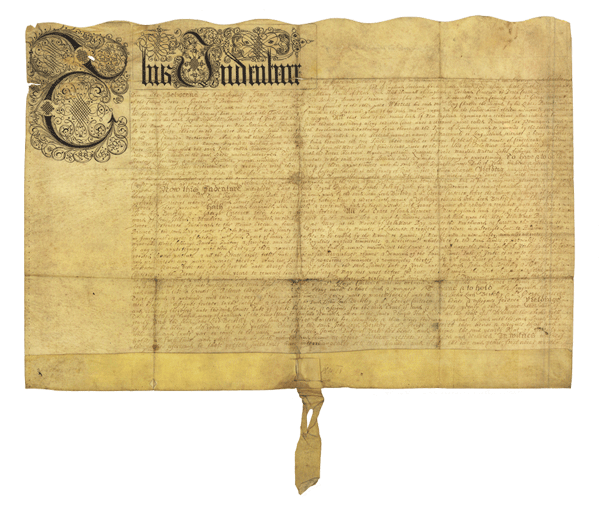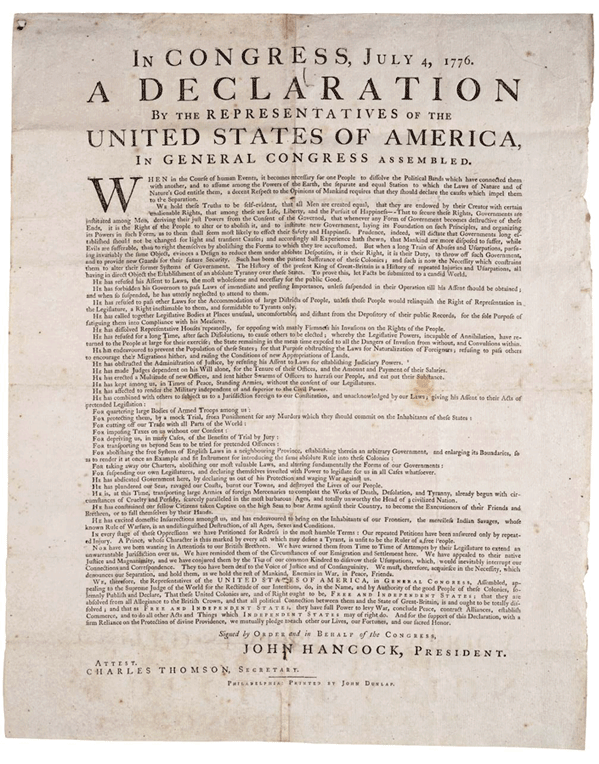While both of these
documents can be called birth certificates, they were radically different.
The 1664 royal grant was a relic of the age of feudalism, when kings
and aristocrats made rules without the need to consult with their subjects.
The 1776 Declaration of Independence was something new in the world, a
statement that threw off the rule of aristocrats and vested the authority
for government with the people.
On June 24,
2009 both of these documents were proudly displayed in the New Jersey
State Museum, 205 West State Street, in Trenton as part of New Jersey's
345th Birthday Party, a free event open to the public.
Release of James, Duke of York to John Lord Berkeley, and Sir George Carteret, original proprietors of the Colony of New Jersey, June
24, 1664
In March 1664 King
Charles II of England granted his brother James, Duke of York lands in
the New World including Maine, Long Island and territory between the Connecticut
and Delaware Rivers. On June 24, 1664, James presented a valuable
portion of this land to John Lord Berkeley and Sir George Carteret in
recognition of their loyalty to the crown during the English Civil War.
Described by one of the Duke's
followers as some of the "most improvabelest land" held by James,
this new proprietary colony was called Nova Caesaria or New Jersey.
In a very real sense, this document represents the birth certificate of
New Jersey.

Courtesy of the
Council of the Proprietors of West New Jersey from their records on deposit
with the New Jersey State Archives and recently conserved through the
generosity of the Society of Colonial Wars in New Jersey.
Declaration of Independence, July 4, 1776
On July 4, 1776, Thomas
Jefferson completed the final draft of the Declaration of Independence
and rushed it to the local print shop of John Dunlap in Philadelphia.
Dunlap printed an estimated 200 copies of the document on large poster
size sheets of paper called broadsides. These 200 Dunlap broadside copies
of the Declaration of Independence were immediately sent out across the
colonies on horseback and read aloud. Two copies were also sent to King
George to officially declare America as independent from England.
In 1989 a shopper
was perusing a flea market when he came across a frame he admired, and
purchased it for $4.00. Later, while inspecting a tear in the back of
the painting, he discovered a piece of paper wedged between the frame
and the painting. He pulled it out and discovered what would soon be authenticated
as the 25th remaining copy of the Declaration of Independence.
After being authenticated
by the Getty Museum and changing hands a few times, it was up for auction
by Sothebys. In 2000, Lyn and Norman Lear purchased this rare, original
copy with the goal of bringing "the people's document" directly
to the American people. Launched on July 4, 2001, the DOI Road Trip was
founded to tour the nation's birth certificate and a multimedia exhibit
across the United States, to engage and energize all Americans, particularly
young people, to participate in civic activism and to vote.
This document remains
as the only touring copy of the Declaration of Independence. The Declaration
is currently on a national tour made possible by the National Student/Parent
Mock Election, the Pearson Foundation, and the non-profit youth voter
registration organization Declare Yourself. It is coming to New Jersey
because schools in the state are being honored for their high level of
participation in the National Student/Parent Mock Election in November
2008. For their role in organizing the mock election, the New Jersey Division
of Elections and the New Jersey Press Foundation will be recognized on
New Jersey Day.
The Declaration of
Independence original copy is owned by Norman Lear, founder of Declare
Yourself, and the national tour is being underwritten by the Pearson Foundation,
the philanthropic arm of the education and technology company Pearson.

Image courtesy of Declare Yourself.
|